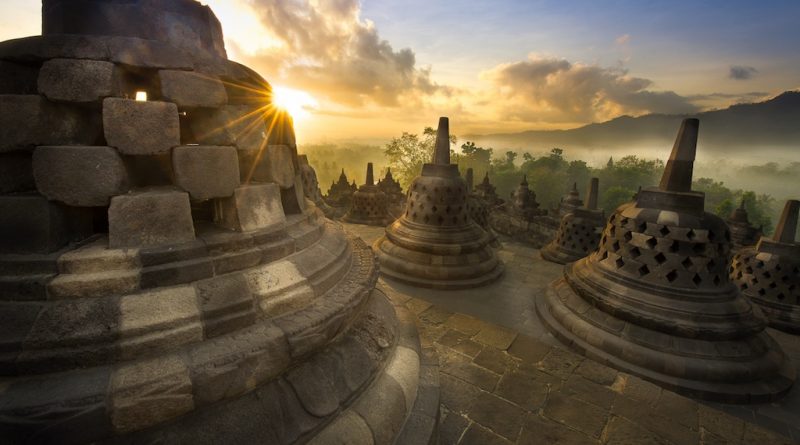Cradle of Culture #1
As the sun begins to rise in the east, dramatic sun rays pierce the clouds and pass through the perforated stone stupas of Borobudur
Within each of the 72 stone stupas sits a carved Buddha in peaceful meditation. A thick, low-hanging fog shrouds the lowest of the stacked platform of the imposing 9th century Mahayana Buddhist temple. In every direction thousands of trees barely peek above the fog. I feel as peaceful as I imagine the meditating Buddha statues to be – for a moment it feels like the massive site is weightless and we;re floating above the clouds. Standing atop Borobudur, with my hand grazing the cold, coarse stone of the central dome, I feel connected to thousands of years of human history and culture.
This is my fourth visit to Yogyakarta and every time I come here I learn something new, see something different and have a unique experience. This is university town after all – home to some of Indonesia’s most prominent higher education institutions and perhaps it’s the mingling of the classic Javanese culture and the resident student population that gives the city a fresh, hip vibe that excites and relaxes at the same time.
Around town you’ll find small, quirky and curious cafes, restaurants and shops. Vibrant street art around every corner on Sosrowijayan contrasts with the traditional wayang / puppet workshops and batik galleries tucked into narrow lane-ways. The city is built around the Keraton Ngayogyakarta Hadiningrat, the royal palace that stands at its heart.
The Sultan still lives here, and traditional artisans still work within its walls. At the same time a number of Indonesia’s leading contemporary artists and art galleries also call the city home. One of Indonesia’s most influential contemporary artist, Affandi, lived in Yogyakarta until he passed away in 1990. His former home – wonderful bizzare building that he designed and constructed himself is now a museum dedicated to his life’s work (www.affandi.org). Museum Affandi houses over 200 of his most distinctive abstract worls alongside his beloved lime-greem 1970 Mustang Galant right in the middle of the gallery.
If you love to explore Asian markets, Jalan Malioboro has an infinitely eclectic assortment of clothes, fabrics, fresh spices and produce, traditional trinkets, handicrafts and homewares. This is also a great introduction to the city’s street food scene, with hawkers selling fresh seafood, fierce sambals, chicken, beef and mutton satay doused in peanut sauce and the city’s quintessential stewed young jackfruit dish, gudeg
Word by Binsar Bob Napitupulu
Previous Article

